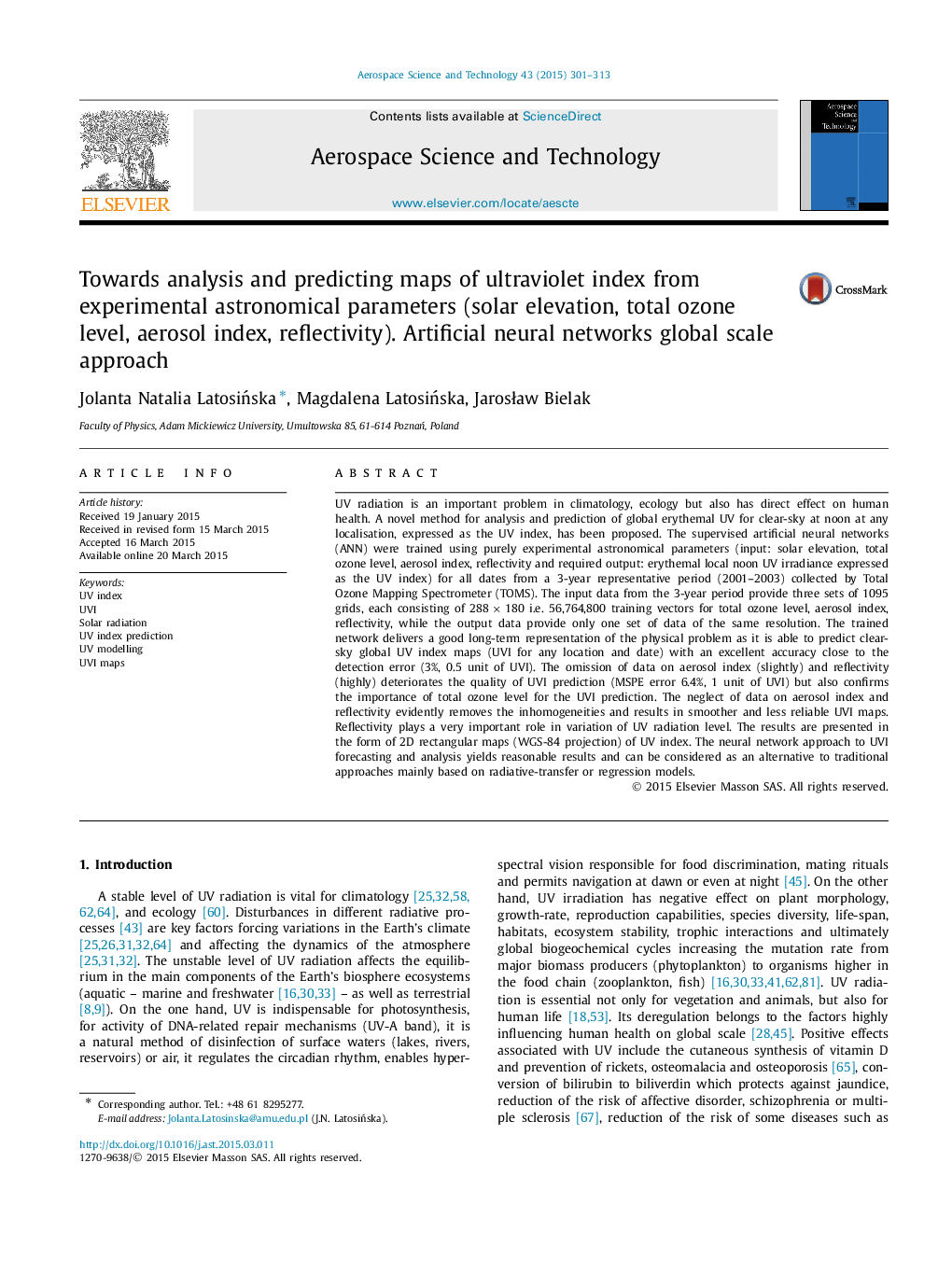| Article ID | Journal | Published Year | Pages | File Type |
|---|---|---|---|---|
| 8058977 | Aerospace Science and Technology | 2015 | 13 Pages |
Abstract
UV radiation is an important problem in climatology, ecology but also has direct effect on human health. A novel method for analysis and prediction of global erythemal UV for clear-sky at noon at any localisation, expressed as the UV index, has been proposed. The supervised artificial neural networks (ANN) were trained using purely experimental astronomical parameters (input: solar elevation, total ozone level, aerosol index, reflectivity and required output: erythemal local noon UV irradiance expressed as the UV index) for all dates from a 3-year representative period (2001-2003) collected by Total Ozone Mapping Spectrometer (TOMS). The input data from the 3-year period provide three sets of 1095 grids, each consisting of 288Ã180 i.e. 56,764,800 training vectors for total ozone level, aerosol index, reflectivity, while the output data provide only one set of data of the same resolution. The trained network delivers a good long-term representation of the physical problem as it is able to predict clear-sky global UV index maps (UVI for any location and date) with an excellent accuracy close to the detection error (3%, 0.5 unit of UVI). The omission of data on aerosol index (slightly) and reflectivity (highly) deteriorates the quality of UVI prediction (MSPE error 6.4%, 1 unit of UVI) but also confirms the importance of total ozone level for the UVI prediction. The neglect of data on aerosol index and reflectivity evidently removes the inhomogeneities and results in smoother and less reliable UVI maps. Reflectivity plays a very important role in variation of UV radiation level. The results are presented in the form of 2D rectangular maps (WGS-84 projection) of UV index. The neural network approach to UVI forecasting and analysis yields reasonable results and can be considered as an alternative to traditional approaches mainly based on radiative-transfer or regression models.
Keywords
Related Topics
Physical Sciences and Engineering
Engineering
Aerospace Engineering
Authors
Jolanta Natalia LatosiÅska, Magdalena LatosiÅska, JarosÅaw Bielak,
